History of the NRA
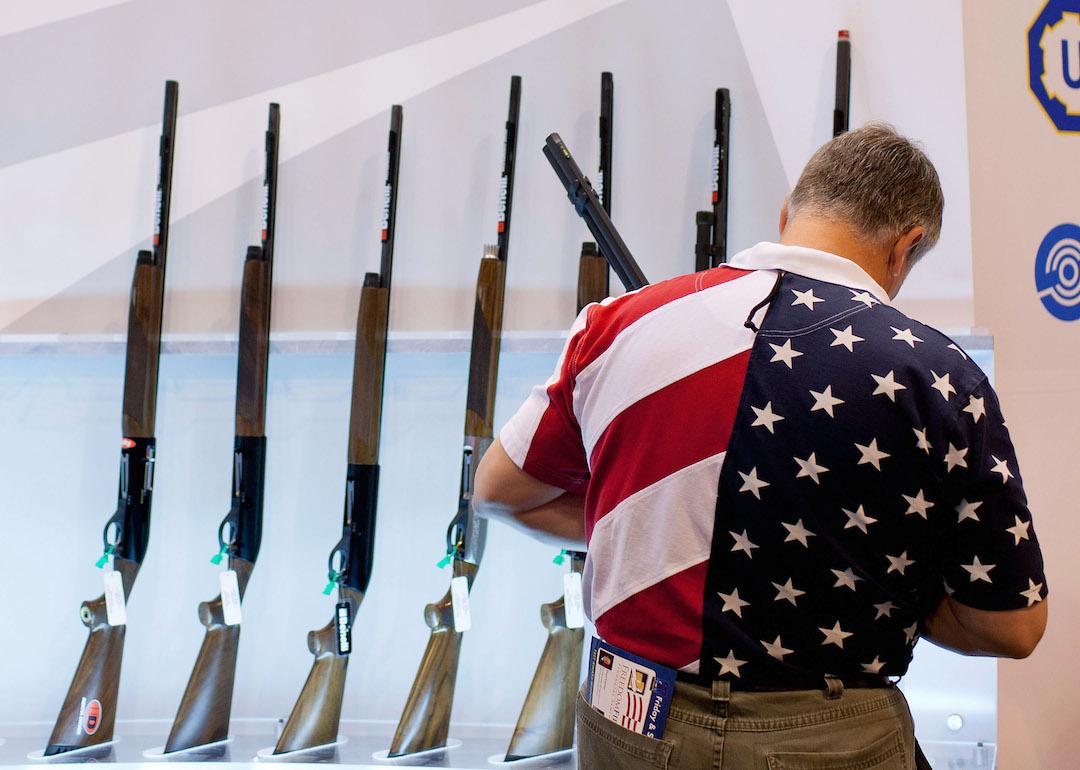
Whitney Curtis // Getty Images
History of the NRA
Benelli display of shotguns during the NRA Annual Meetings and Exhibits April 13, 2012 at the America’s Center in St. Louis, Missouri.
The National Rifle Association (NRA) has gone through a metamorphosis since its founding after the Civil War. Created to improve marksmanship among soldiers and recruits, it at first cooperated with the federal government on concealed weapon permits and other laws regulating firearms.
Over time, however, the NRA grew into a powerful organization that opposed almost all gun control measures. It created a lobbying arm, raised a substantial war chest, and developed unrivaled influence over lawmakers. The NRA actively helped to block efforts to ban assault rifles after the school shooting at Sandy Hook Elementary School in Newtown, Connecticut, when a gunman killed 20 first-graders and six staff members.
When a gunman killed 19 students and two teachers at Robb Elementary School in Uvalde, Texas, on May 24, 2022, the NRA’s role was further put under the microscope given that the mass shooting occurred just days before the organization’s annual meeting in Houston, less than 300 miles away from Uvalde, and its speakers list included Texas Gov. Greg Abbott and Senator Ted Cruz, both of whom exert tremendous political power over the issue of gun safety and have been adamant supporters of the NRA. (The convention went on as planned, despite the events in Uvalde, with Donald Trump and Ted Cruz among the speakers.)
Gun control groups such as Everytown for Gun Safety, the Brady Campaign to Prevent Gun Violence, and March for Our Lives have been challenging the NRA’s primacy among politicians and at the polls in recent years. In 2020, New York Attorney General Letitia James filed a lawsuit demanding its dissolution, alleging top leadership diverted funds for their personal use. Five months after that lawsuit was filed, the organization filed for bankruptcy, which was blocked by a judge as was James’ original lawsuit in 2022.
Mass shootings, sadly, show no sign of abating, and gun culture in America remains steadfast, despite the prevalence of such incidents. To see how the NRA became what it is today, Stacker compiled a timeline of its history, from its founding to its current court battles. All information was gleaned from historical records, primary documents, and news and legal accounts.
You may also like: 50 facts about guns in America
![]()
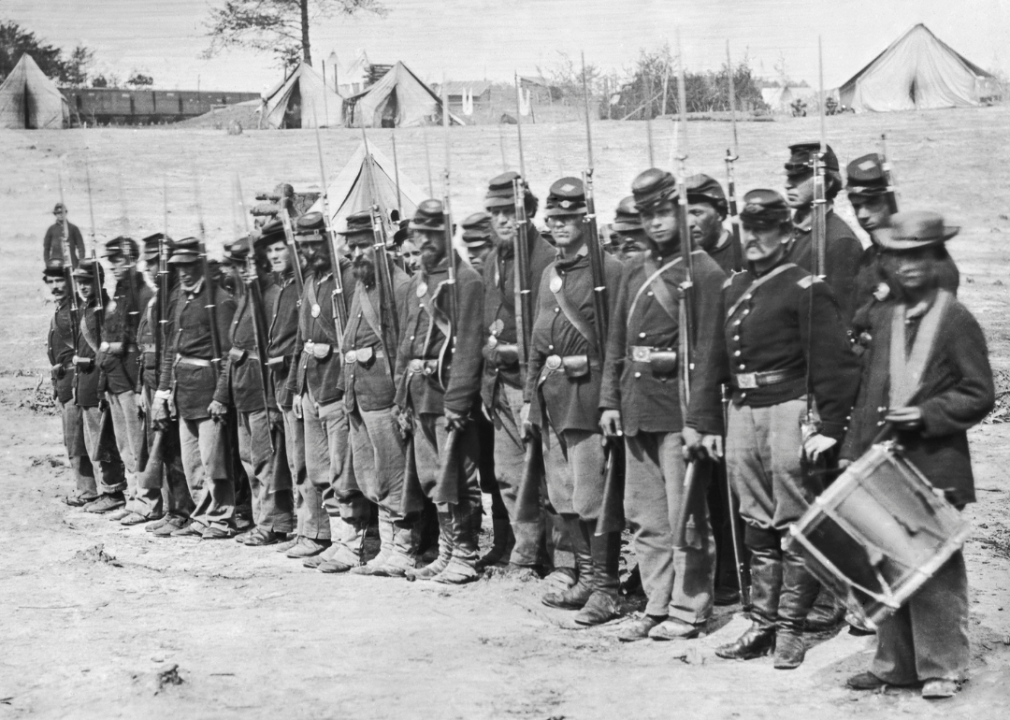
Corbis // Getty Images
1871: NRA is created
Union Army veterans Col. William C. Church and Gen. George Wingate worried about the poor marksmanship among their troops. They founded the National Rifle Association to teach rifle skills. Fellow Civil War veteran Gen. Ambrose Burnside, a former governor of Rhode Island and U.S. senator, became the organization’s first president. The group is chartered by the state of New York.
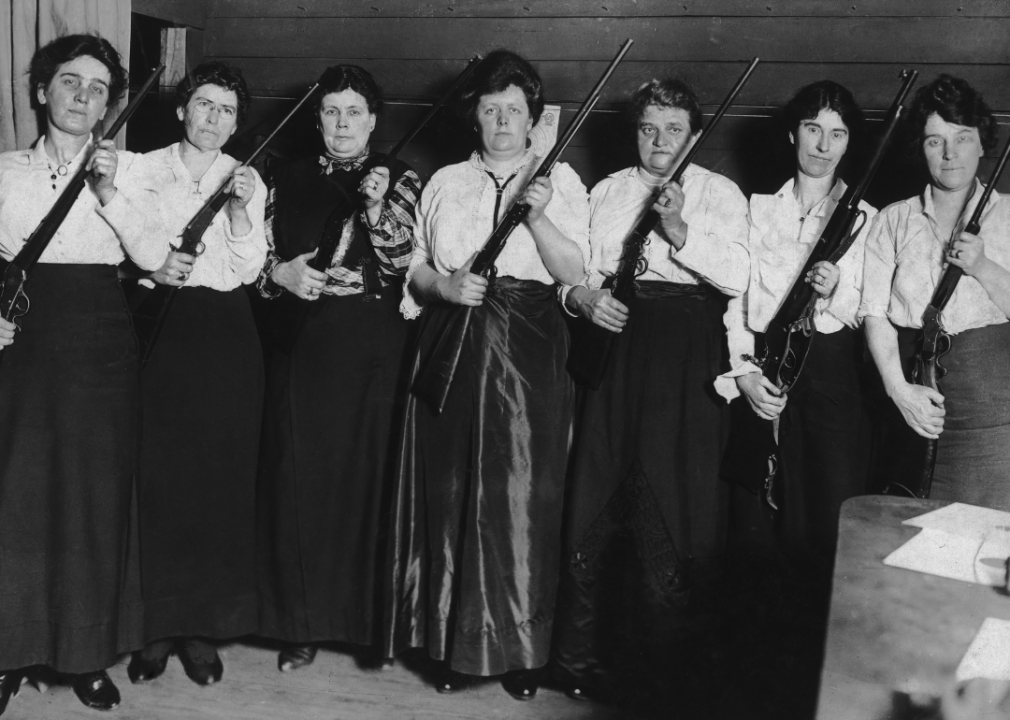
Paul Thompson // Getty Images
1872: NRA buys first rifle range
With $25,000 from New York state, the NRA bought part of what was the Creed family farm to use as a rifle range for the New York State National Guard. Renamed Creedmoor, the range opened a year later and began holding annual matches. Nearby streets are named after weapons: Winchester Boulevard, and Range, Musket, Pistol, and Sabre streets.
The range was bought by the state in 1907 and closed.
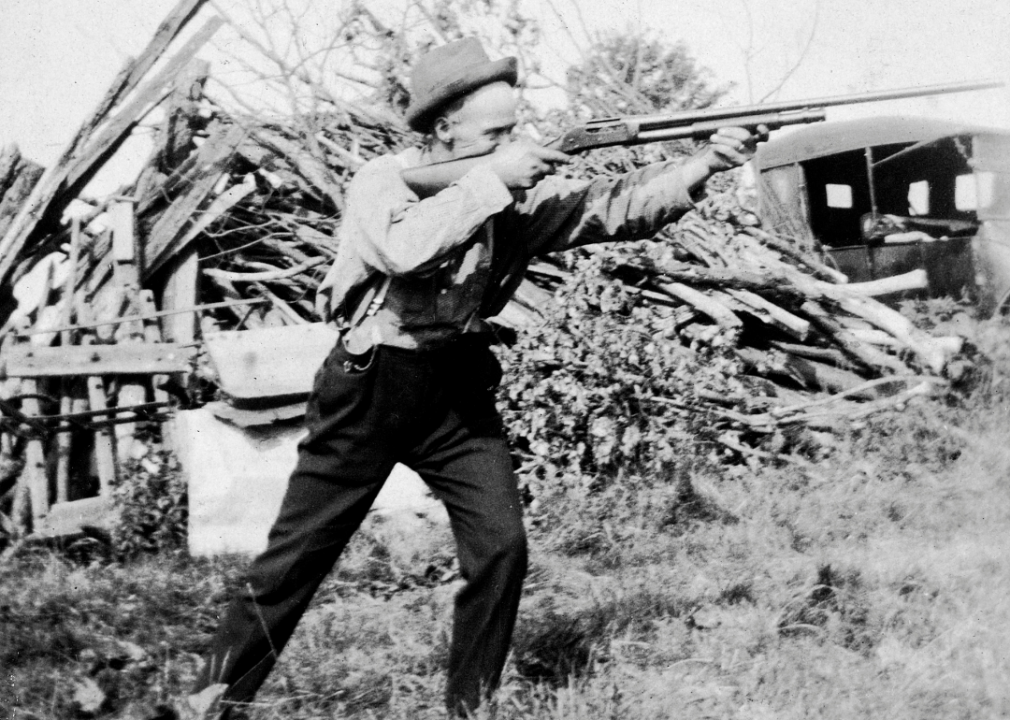
Kirn Vintage Stock // Getty Images
1920s: Arm of NRA proposes requiring permits
The National Revolver Association, part of the NRA, first proposed requiring a permit to carry a concealed weapon in the 1920s. Other aspects of the NRA’s legislation: adding five years of prison time if a gun was used in a crime, prohibiting the sale of a gun to a noncitizen, imposing a one-day waiting period before a purchaser could take possession of a gun, and opening records of gun sales to police. Nine states quickly adopted the legislation.
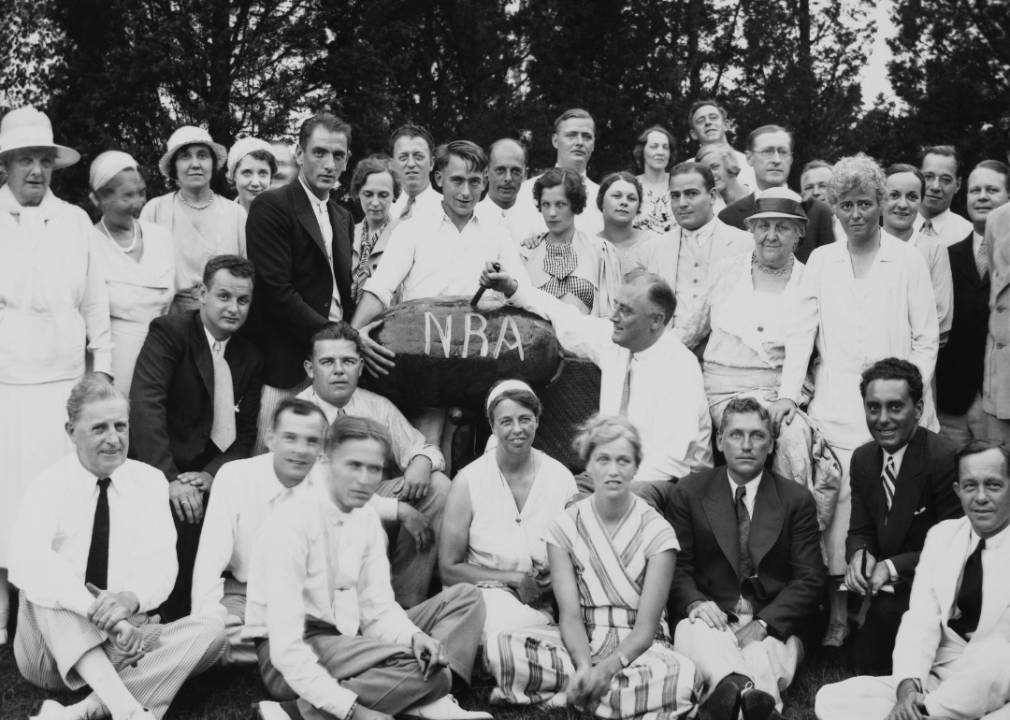
Keystone-France // Getty Images
1934: NRA helps draft National Firearms Act
The NRA helped President Franklin Roosevelt draft the National Firearms Act, a response to Prohibition-era violence. Machine guns, sawed-off shotguns, and other weapons were taxed and were required to be registered. “I have never believed in the general practice of carrying weapons,” NRA President Karl T. Frederick told Congress. “I do not believe in the general promiscuous toting of guns. I think it should be sharply restricted and only under licenses.” But he refused to go along with restricting the sale of pistols.
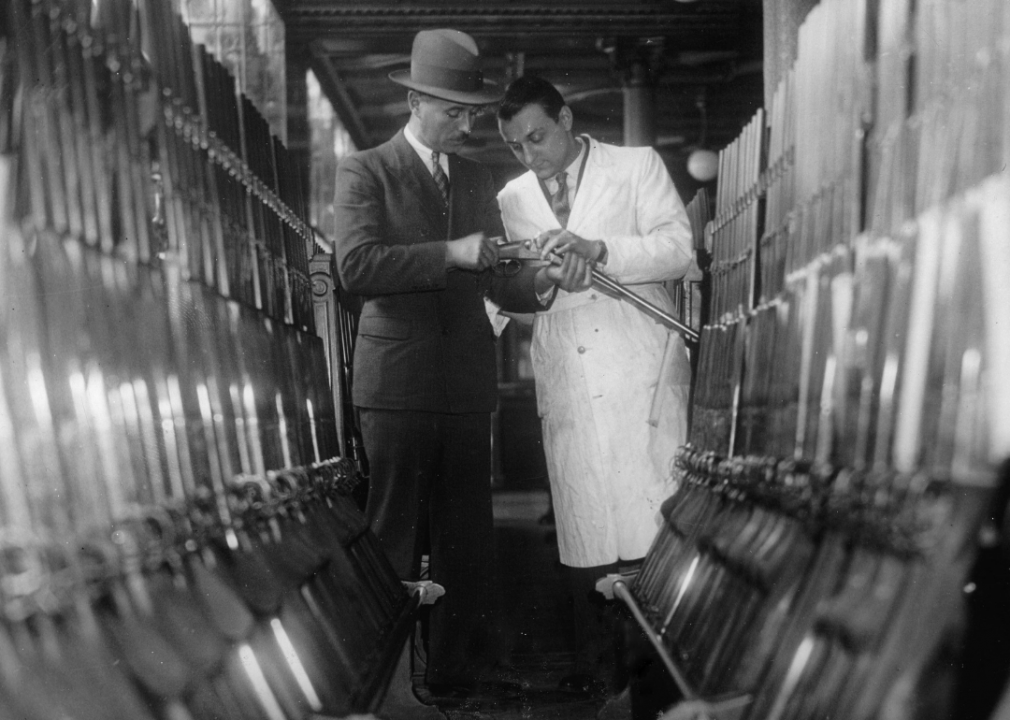
Imagno // Getty Images
1938: NRA backs Federal Firearms Act
The NRA again supported the Federal Firearms Act of 1938. The legislation was written into law and required manufacturers, importers, and gun dealers to get a federal license; prohibited felons from buying guns; and demanded gun sellers keep records.
You may also like: Gun control legislation that passed and failed over the last 20 years

Bettmann // Getty Images
1967: California bans open carry
The NRA came out in strong support of California’s Mulford Act, which banned the open carry of firearms. The law was passed after armed Black Panthers began patrolling to guard against police brutality. Two dozen Black Panthers carrying weapons entered the state Capitol in May as lawmakers considered the legislation before being disarmed by the state police.
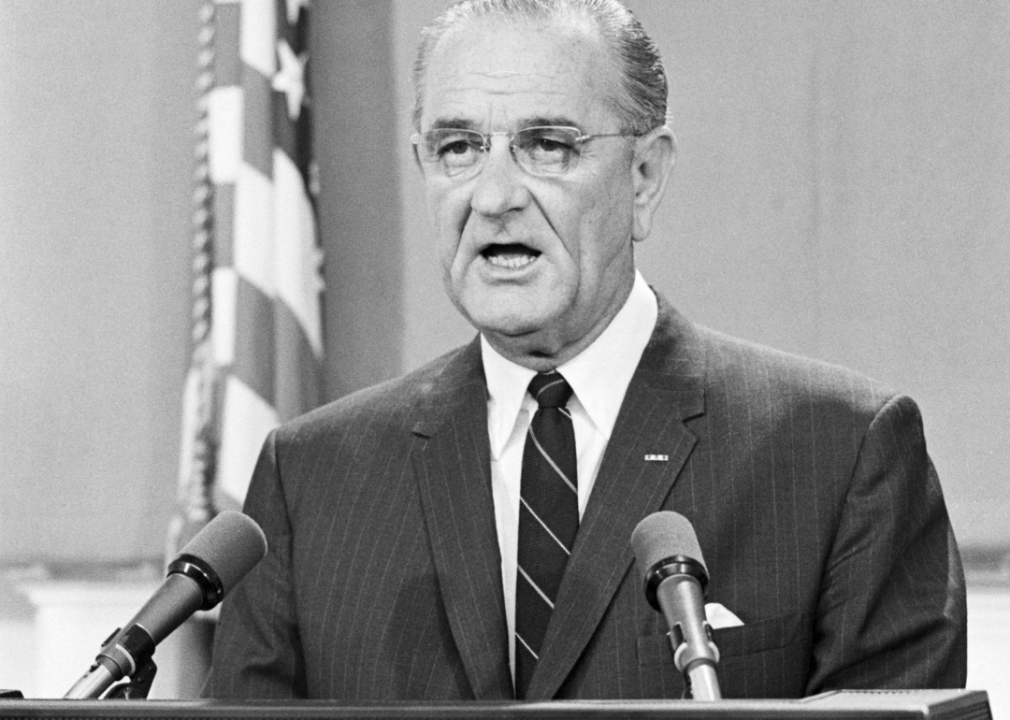
Bettmann // Getty Images
1968: NRA limits Gun Control Act
Congress imposed new restrictions on gun sales with the Gun Control Act following the assassinations of President John F. Kennedy, his brother, Robert Kennedy, and civil rights activist Martin Luther King Jr. The new law limited mail-order gun purchases, required all weapons to carry serial numbers, and restricted felons, those who abused drugs, and those who were mentally ill from buying weapons.
Provisions it did not include: a national gun registry or licenses for all gun carriers. The NRA had opposed them, raising the ire of President Lyndon B. Johnson, who called it “a powerful lobby, a gun lobby.”
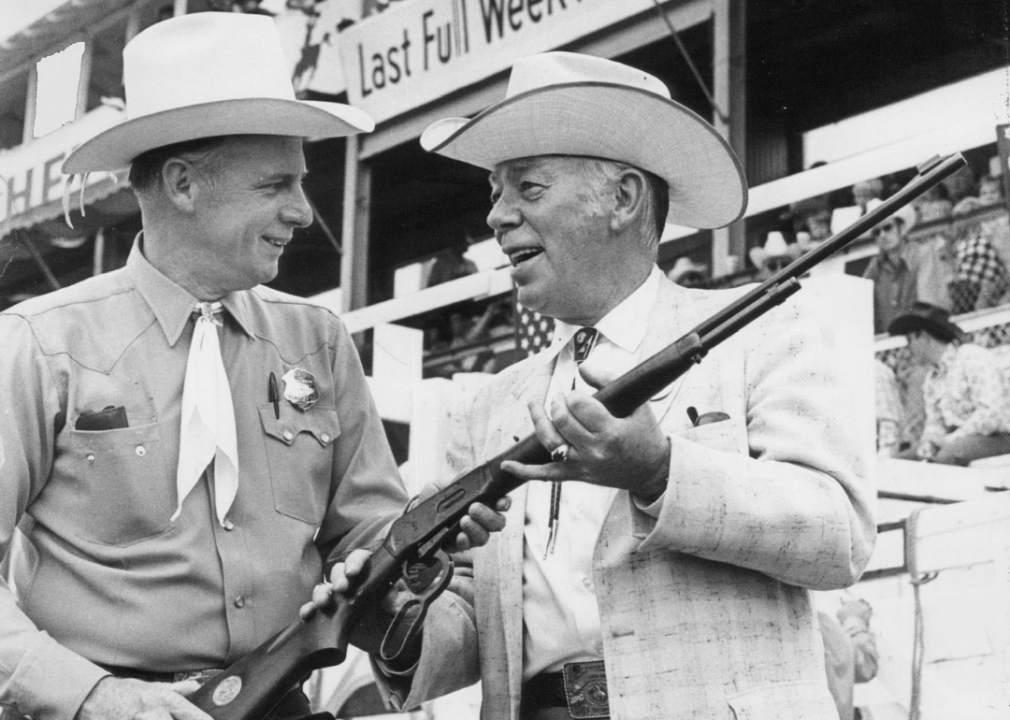
Duane Howell // Getty Images
1971: NRA creates lobbying arm
Agents from the federal Bureau of Alcohol, Tobacco and Firearms, or the ATF, killed an NRA member hiding a cache of illegal weapons. In response, the NRA created a lobbying arm called the Institute for Legislative Action. A Texas lawyer named Harlon Carter, who had led the Border Patrol in the 1950s, was chosen to head it.
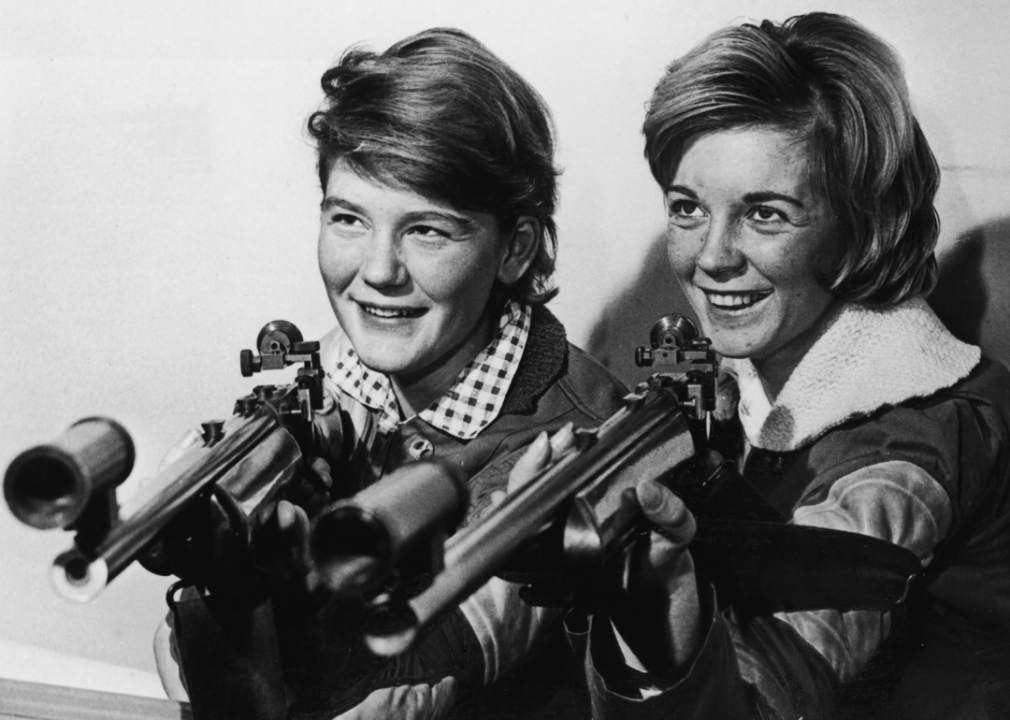
FPG // Getty Images
1977: Hardliner takes control of NRA
A hardliner named Harlon Carter ran up against older members of the NRA who tried to curtail his power by cutting his staff. He organized a takeover at the NRA’s annual convention in 1977 and became the group’s executive vice president. Another hardliner, Neal Knox, took over the Institute for Legislative Action. Suddenly, the NRA group opposed all types of gun control.
“You don’t stop crime by attacking guns,” Carter said. “You stop crime by stopping criminals.”
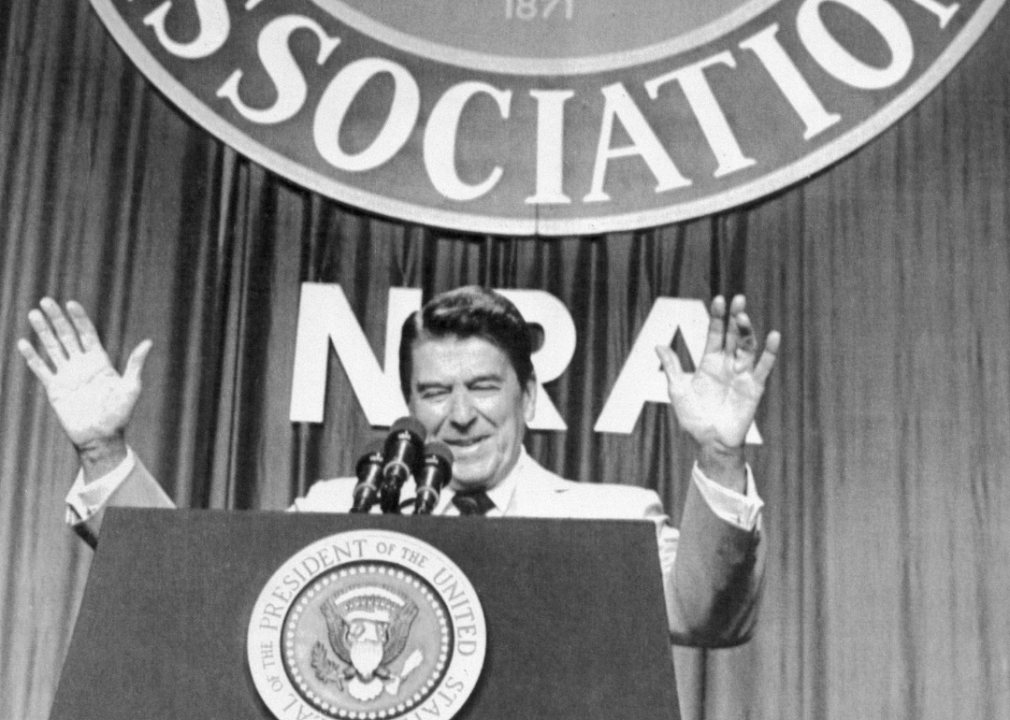
Bettmann // Getty Images
1980: NRA backs Reagan for president
The NRA made its first endorsement for president in 1980 and wound up backing a winner: Ronald Reagan. As governor of California, Reagan had signed the Mulford Act into law. He was a lifelong member of the NRA but supported some gun control measures—particularly after the attempt on his life that wounded his press secretary, Jim Brady.
You may also like: 25 terms you should know to understand the gun control debate
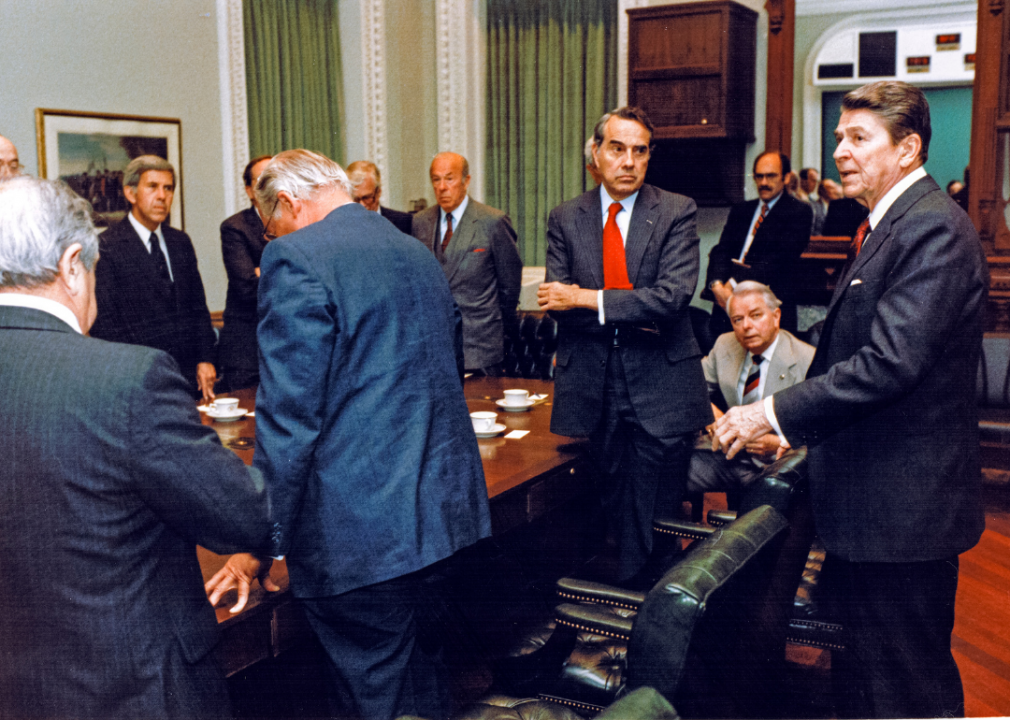
Consolidated News Pictures // Getty Images
1986: NRA wins rollback of gun sale restrictions
The NRA saw years of lobbying succeed with the passage of the Firearms Owners’ Protection Act. It rolled back restrictions on buying, selling, and transporting weapons across state lines that were included in the 1968 Gun Control Act. To pull off the passage of the legislation, the NRA donated $1.4 million to candidates for Congress during the 1984 elections.
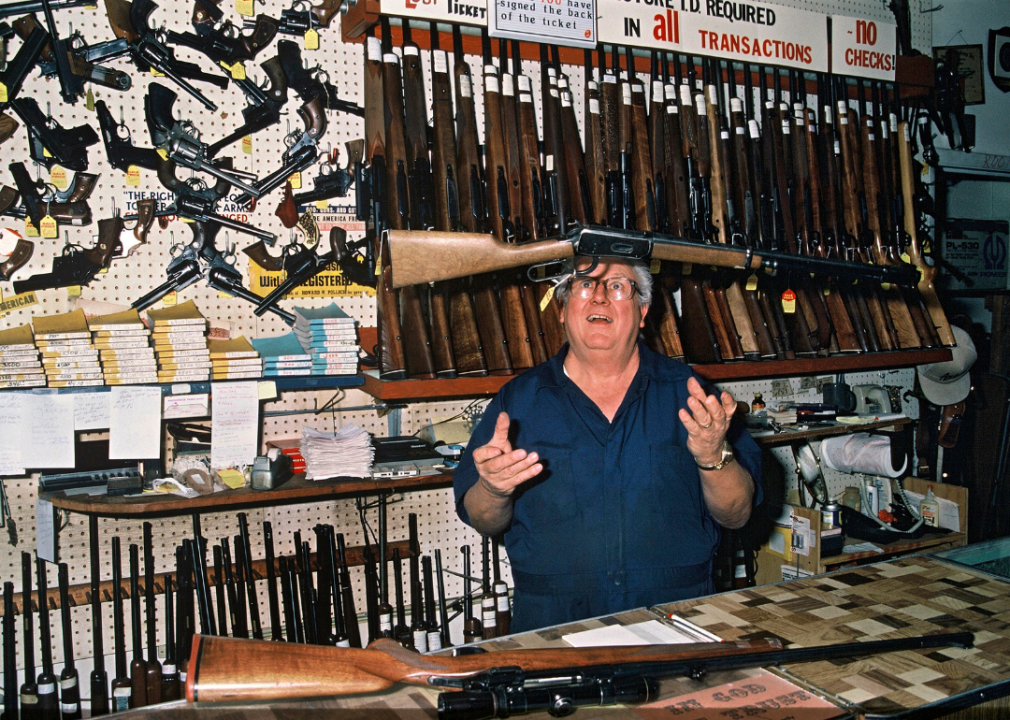
Jean-Erick PASQUIER // Getty Images
1993: NRA challenges passage of Brady Bill
When John Hinckley Jr. tried to kill President Ronald Reagan in 1981, he also shot press secretary Jim Brady in the head. Twelve years later, the Brady Handgun Violence Prevention Act passed, requiring a background check for those buying firearms. The electronic National Instant Criminal Background Check System went online in 1981. The NRA argued unsuccessfully in court that the Brady Act and the NICS were unconstitutional infringements on states’ rights.
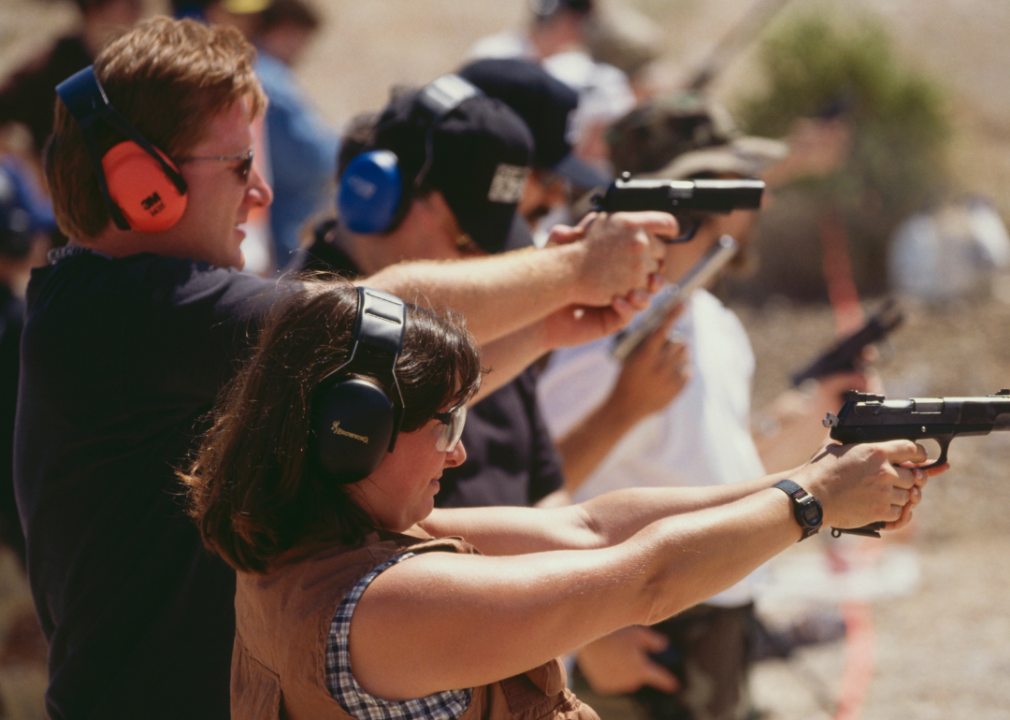
Kim Kulish // Getty Images
1994: NRA opposes restrictions on semiautomatic weapons
The NRA opposed the Violent Crime Control and Law Enforcement Act, which banned the manufacture, ownership, or transfer of AR-15s and other semiautomatic weapons. Another provision limited magazines to 10 bullets. It was prompted by a number of mass shootings, including one on the Long Island Railroad in New York and another at a law firm in San Francisco.
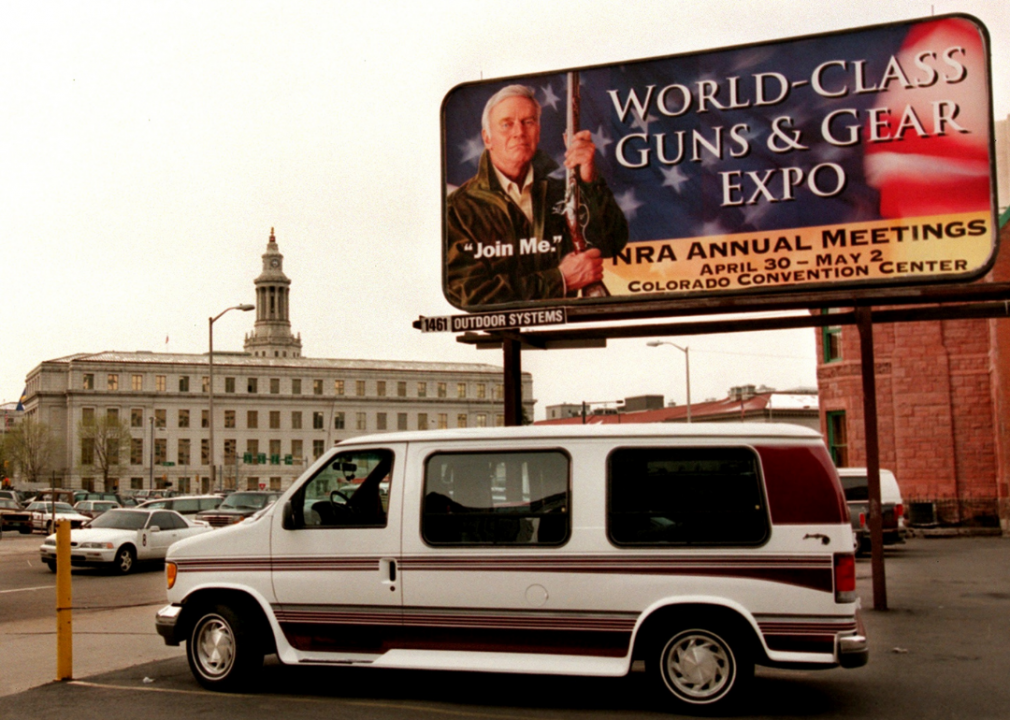
John Preito // Getty Images
1999: After Columbine, NRA continues to oppose waiting periods
After the Columbine High School shooting in Littleton, Colorado, the NRA continued to oppose a waiting period for handgun purchases and a limit of one gun a month for individual purchases. However, it said it would consider background checks at gun shows and bar juveniles with felony convictions from buying guns. It also went forward with its annual meeting in Denver, though it was scaled down and was met by protests.
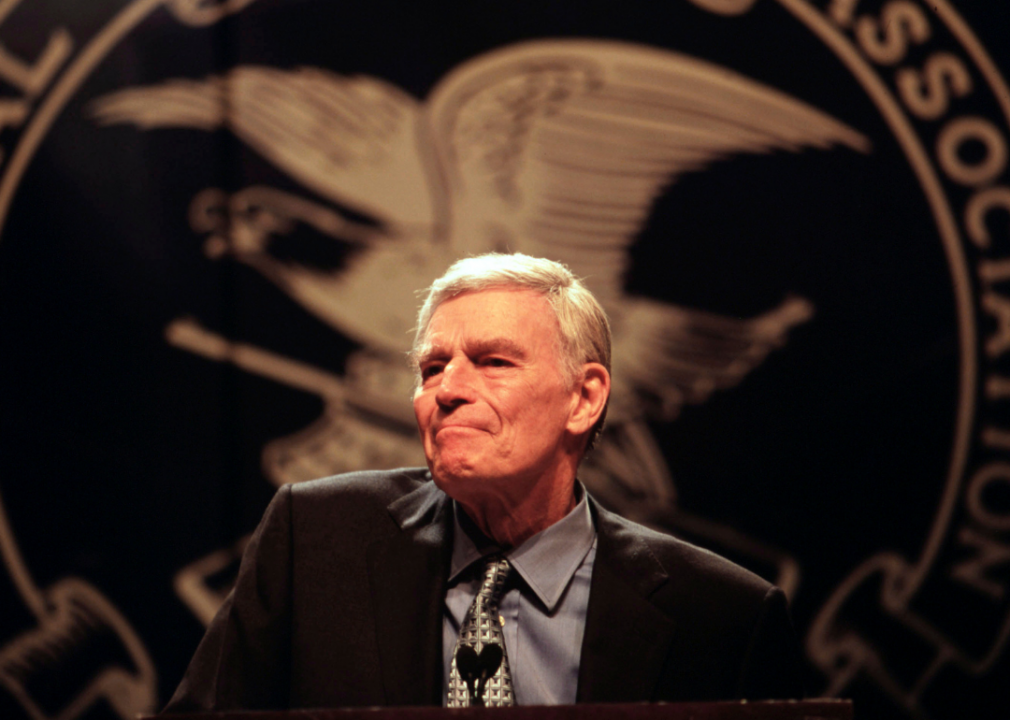
mark peterson // Getty Images
2000: ‘From my cold dead hands’
Actor Charlton Heston, NRA president from 1998 to 2003, infamously stood before NRA members at the group’s 2000 convention, raised a rifle over his head, and said, “From my cold dead hands.” Heston was rallying them against the presidential candidacy of Vice President Al Gore. “I want to say those fighting words for everyone within the sound of my voice to hear and to heed, and especially for you, Mr. Gore,” he said. “From my cold, dead hands.” The phrase was from a slogan the NRA used on a series of bumper stickers.
You may also like: Experts rank the best US presidents of all time
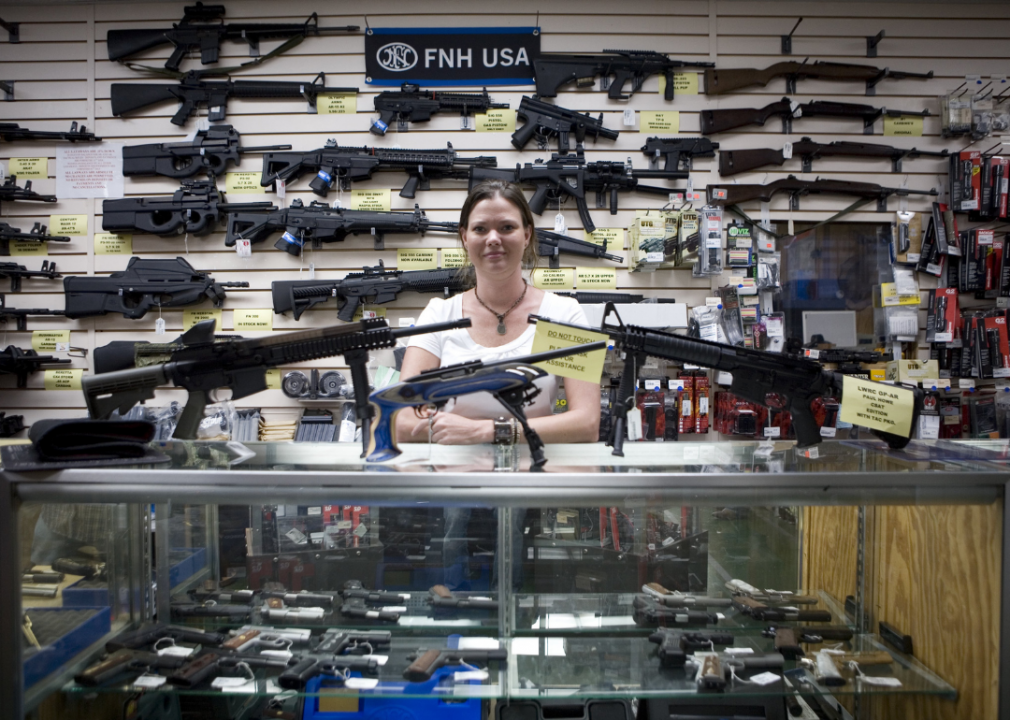
Gilles Mingasson // Getty Images
2004: Federal assault weapon ban expires
The federal assault weapon ban was allowed to expire in 2004. Congressional members who voted for the ban were opposed by the NRA at the polls.
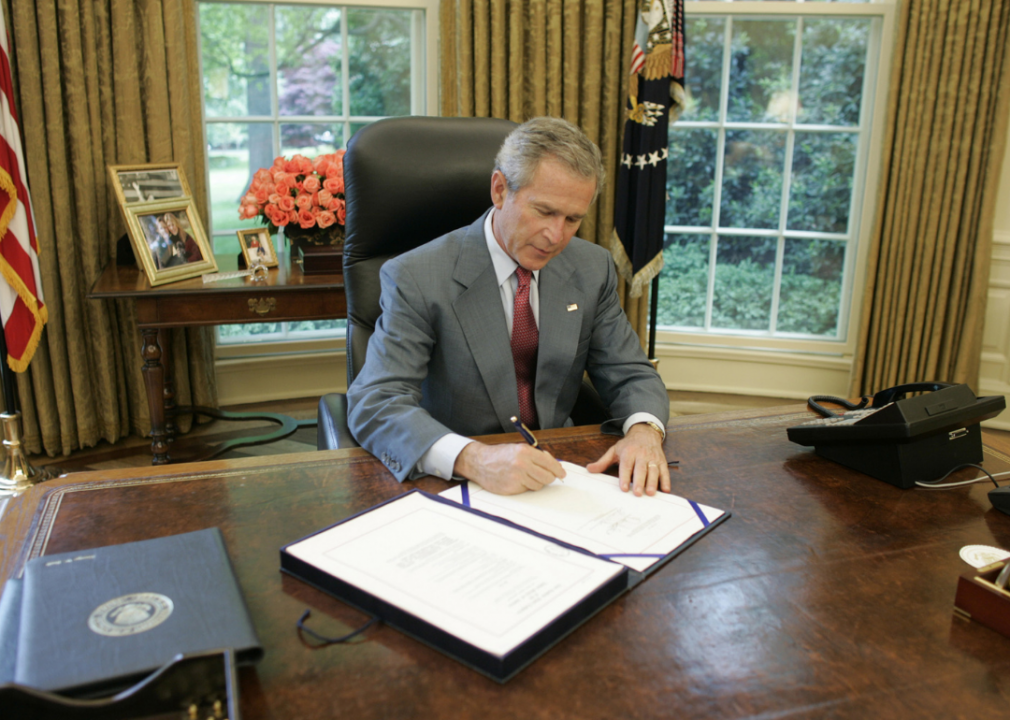
The White House // Getty Images
2005: NRA helps win immunity for gun manufacturers
The NRA pushed for immunity for gun manufacturers from civil lawsuits from crimes committed with guns. The Protection of Lawful Commerce in Arms Act was signed by President George W. Bush and derailed attempts to hold manufacturers liable for crimes. The NRA praised the law as “a vitally important first step toward ending the anti-gun lobby’s shameless attempts to bankrupt the American firearms industry through reckless lawsuits.”
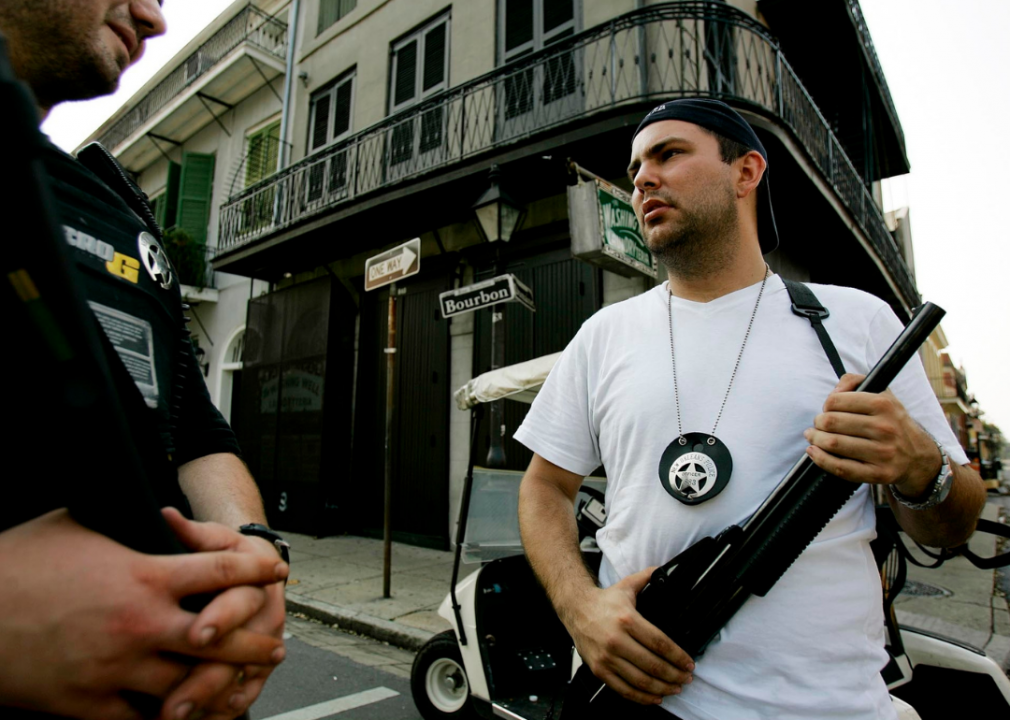
David Howells // Getty Images
2006: NRA opposes confiscating guns during emergencies
The NRA challenged an order from the New Orleans police chief to his officers to confiscate firearms from residents after Hurricane Katrina flooded the city. The NRA won a temporary injunction. Later, the Disaster Recovery Personal Protection Act barred the seizure of firearms during emergencies.
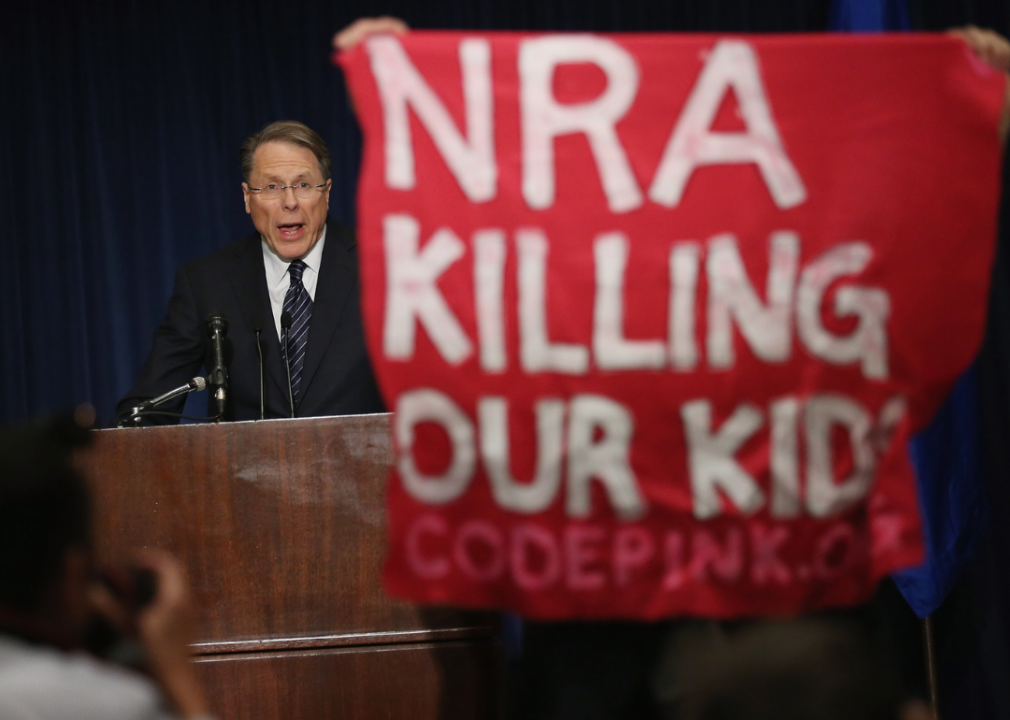
Chip Somodevilla // Getty Images
2012: NRA rejects gun controls after Sandy Hook massacre
After 20 first-graders and six adults were shot to death at Sandy Hook Elementary School in Newtown, Connecticut, by a gunman using a semiautomatic weapon, the NRA again rejected demands for more gun control. The group’s executive vice president, Wayne LaPierre, instead called for armed police officers in every school in the country and announced an NRA training program. The Washington Post reported some senior officials in the group thought it should take a less confrontational approach.
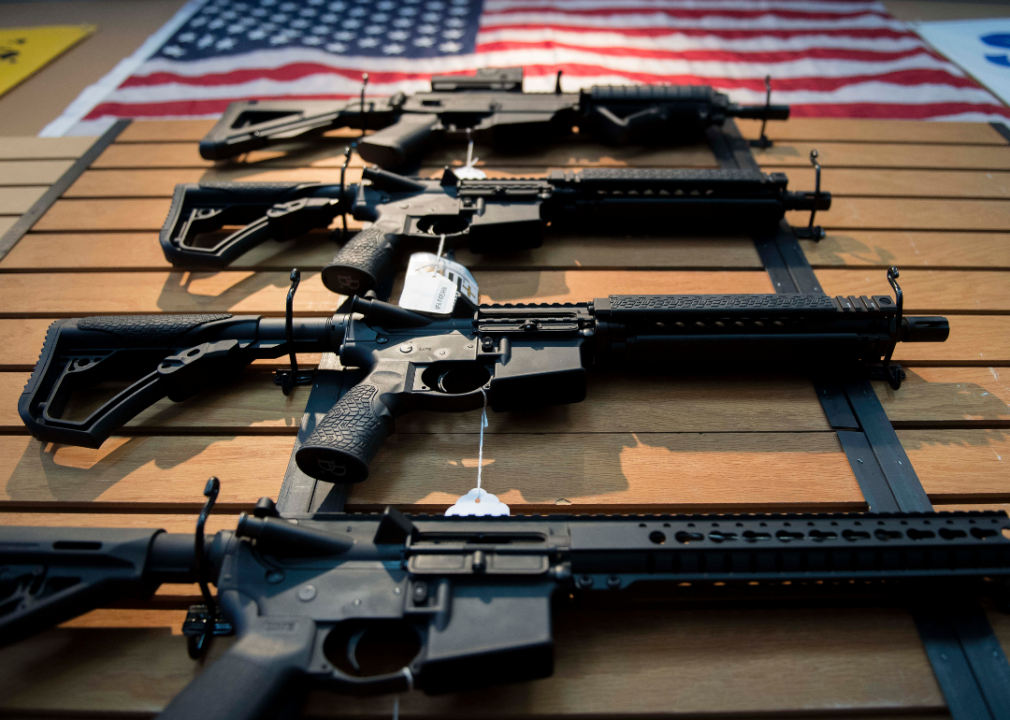
AFP // Getty Images
2013: NRA blocks assault weapon ban
Following the Sandy Hook Elementary School massacre, President Barack Obama pushed to reinstate the ban on assault weapons. Although most Americans backed tighter gun controls, the NRA instituted a campaign to “stop the gun ban.” The Senate voted it down, 60 to 40.
You may also like: Jobs with the highest fatality rates in the US

Chip Somodevilla // Getty Images
2018: ‘March for Our Lives’ confronts NRA
After the shooting at Marjory Stoneman Douglas High School in Parkland, Florida, the NRA released a video saying “the mainstream media love mass shootings,” accusing journalists of using the incidents “to juice their ratings and push their agenda.” The organization again resisted calls for stricter gun laws. A student-led group called March for Our Lives grew out of the tragedy to challenge the NRA and organized massive protests in Washington D.C. and nationwide calling for new gun control laws.
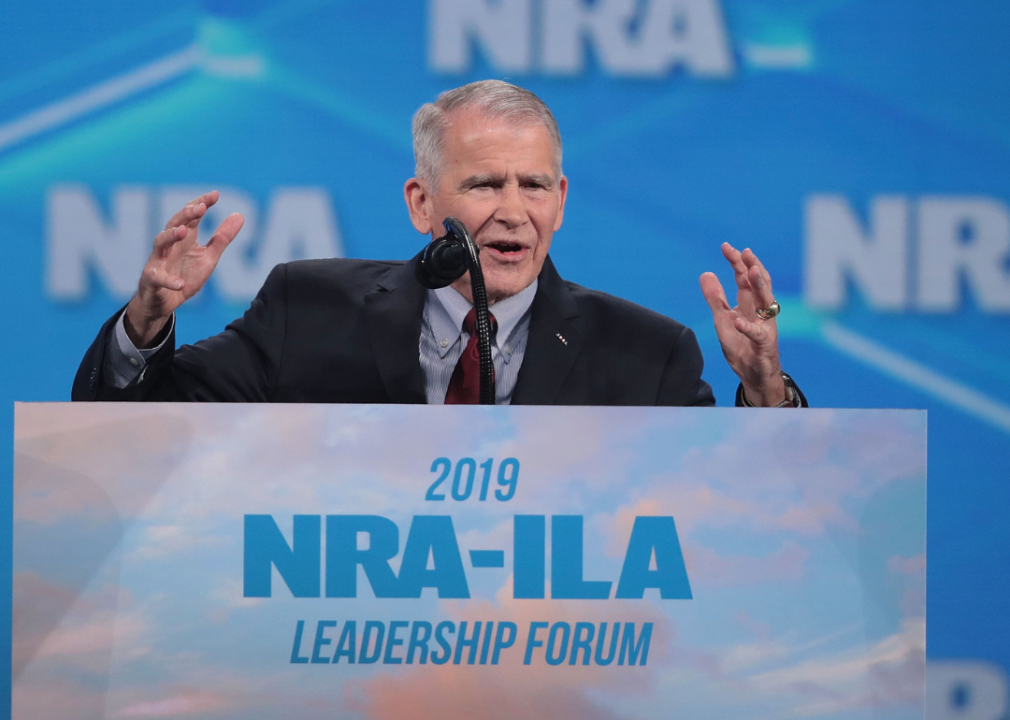
Scott Olson // Getty Images
2019: NRA faces upheaval in leadership
Retired Marine Lt. Col. Oliver North accused the NRA’s executive vice president, Wayne LaPierre, of ousting him as president. North had alleged financial misbehavior by the group’s leadership. LaPierre accused North of threatening to release “damaging” information about him in a letter to NRA board members, some of whom subsequently resigned. Meanwhile, New York Attorney General Letitia James began investigating the organization’s tax-exempt status and its charitable foundation.

Mikhail Japaridze // Getty Images
2019: Russian activist tries to infiltrate NRA
Also in 2019, Russian gun rights activist Maria Butina was sentenced to 18 months in prison after pleading guilty to conspiring with a Russian official to infiltrate the NRA. The FBI said her goal was to use the NRA to establish contact with officials and influence U.S. foreign policy in favor of Russia. She was released in October and deported to Moscow.
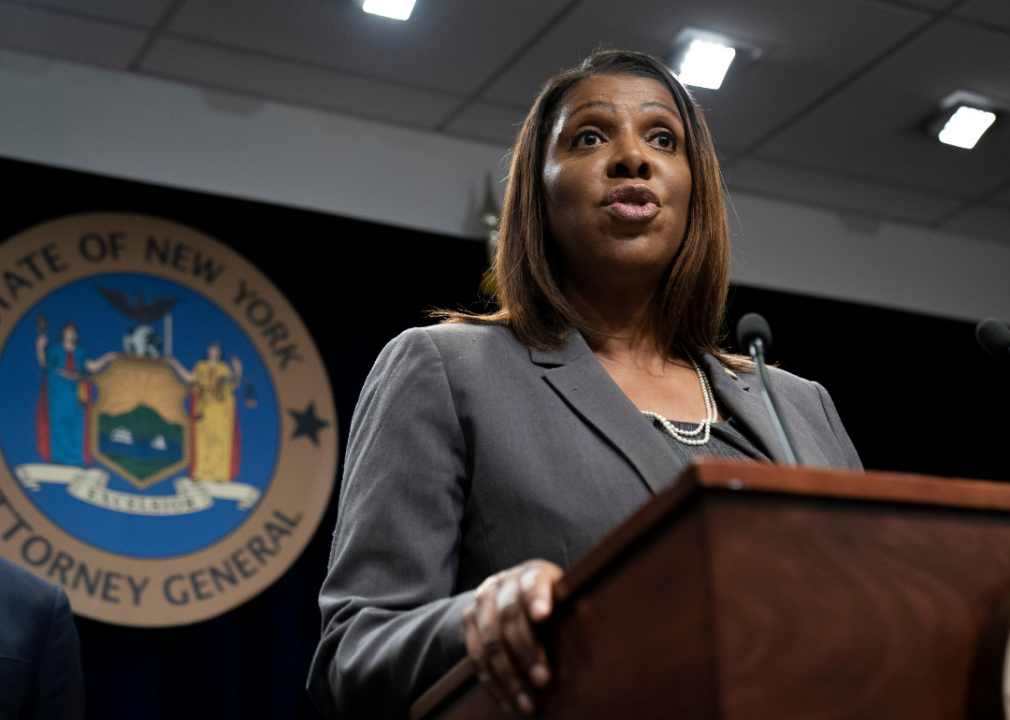
Drew Angerer // Getty Images
2020: New York attorney general seeks to dissolve NRA
New York Attorney General Letitia James filed a lawsuit in 2020 to dissolve the NRA, accusing its leaders of diverting millions of dollars from the organization to pay for their lavish lifestyles. Their failure to manage the NRA’s funds had contributed to a loss of more than $64 million in only three years, James charged. Among the alleged misappropriation of funds were trips to the Bahamas and private jets.
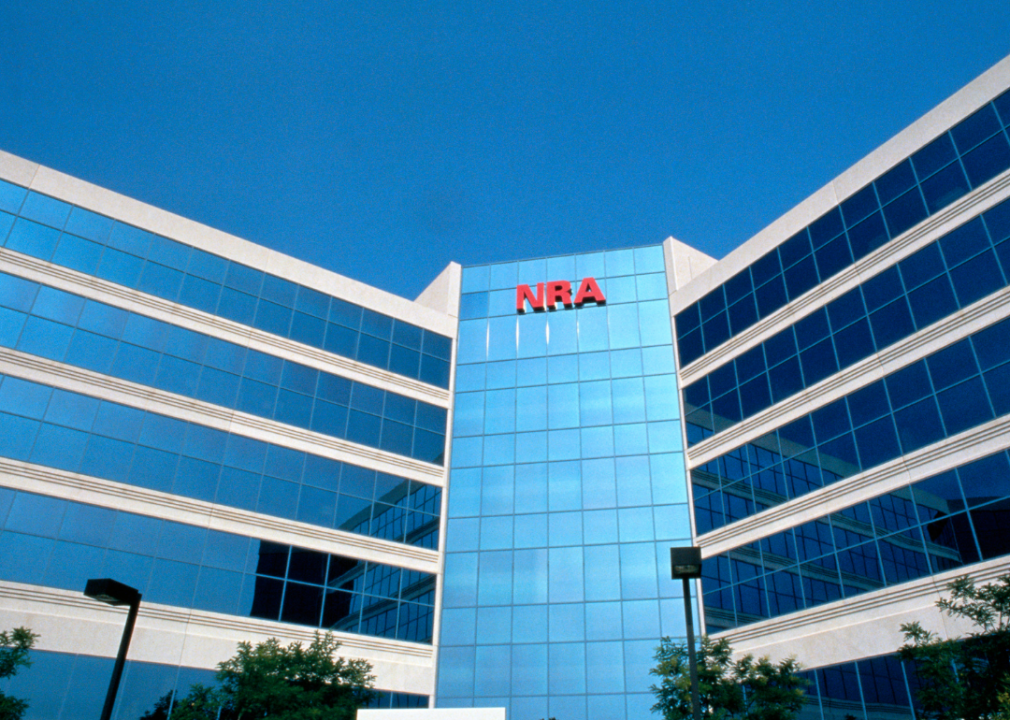
mark peterson // Getty Images
2021: NRA fails in bankruptcy bid
The NRA tried, and failed, to use bankruptcy laws to evade Letitia James’ attempt to shut the group down. A federal bankruptcy judge ruled in May 2021 that it could not use a bankruptcy claim “to address a regulatory enforcement problem.”
Executive Vice President Wayne LaPierre said the NRA would keep fighting for gun rights. James tweeted: “The @NRA does not get to dictate if and where it will answer for its actions, and our case will continue in New York court. … We sued the @NRA to put an end to its fraud and abuse, and now we will continue our work to hold the organization accountable.”
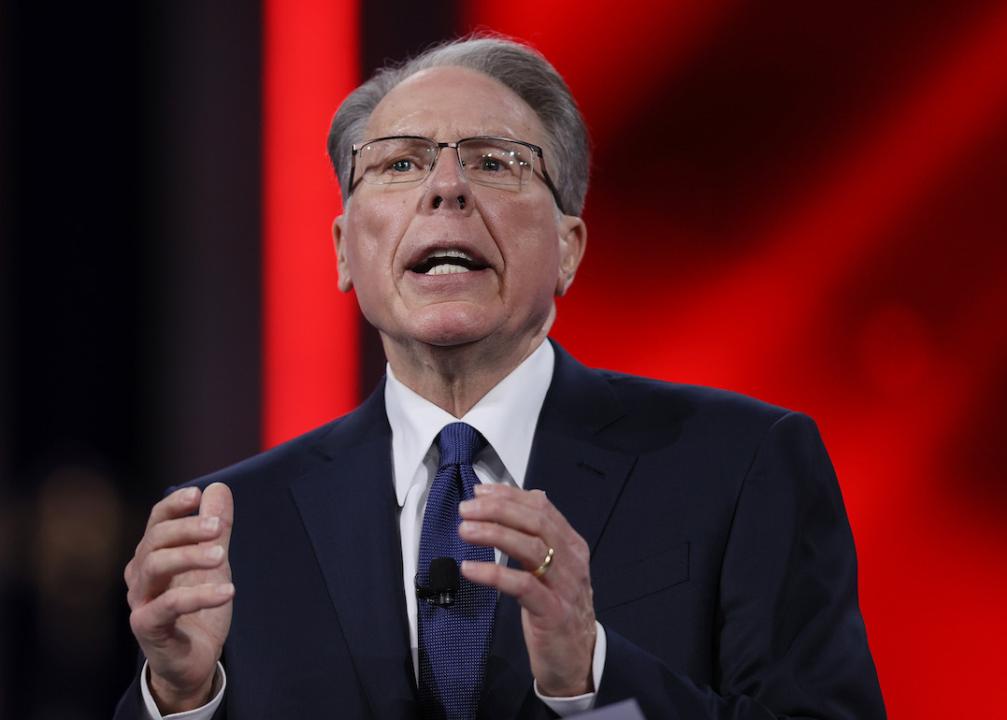
Joe Raedle // Getty Images
2022: Judge blocks lawsuit seeking to dissolve the NRA
In early March 2022, a judge blocked New York Attorney General Letitia James’ lawsuit attempting to put the NRA out of business. In his 42-page decision, Justice Joel M. Cohen of the New York County Supreme Court in Manhattan wrote: “The Complaint does not allege that any financial misconduct benefited the NRA, or that the NRA exists primarily to carry out such activity, or that the NRA is incapable of continuing its legitimate activities on behalf of its millions of members. … The Complaint does not allege the type of public harm that is the legal linchpin for imposing the ‘corporate death penalty.'”
While James’ attempt to dissolve the NRA was blocked, Cohen did say that 14 of James’ other claims could move forward, including potentially ousting longtime CEO and Executive Vice President Wayne LaPierre (pictured here). “[James’] allegations concern primarily private harm to the NRA and its members and donors, which if proven can be addressed by the targeted, less intrusive relief she seeks through other claims in her Complaint,” Cohen wrote. According to his decision, James described LaPierre’s abuse of power, exploitation, and “general disregard for corporate governance” in “meticulous detail.”
After the judge’s ruling, James tweeted that she was reviewing her legal options. Though she said she was disappointed by the result, she hopes to continue to expose the alleged “fraud, abuse, and greed [that] permeate through the NRA and its senior leadership.”
NRA President Charles Cotton also released a statement in response to the judge’s decision. “The message is loud and clear: the NRA is strong and secure in its mission to protect constitutional freedom,” he said. Meanwhile, despite the NRA’s attempted bankruptcy filing, its lobbying expenditures remain in the millions annually, according to Open Secrets.
You may also like: Countries spending the most on their militaries